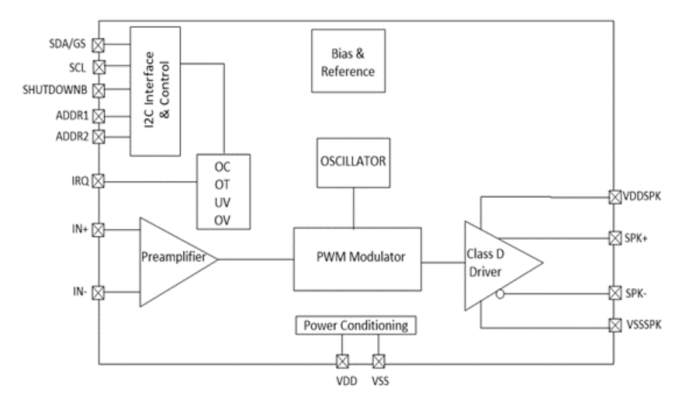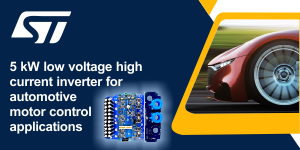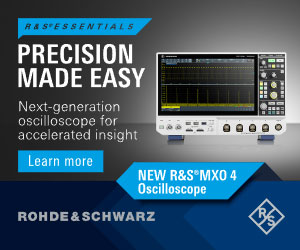Introduction: Audio Systems in the Age of Efficiency
As embedded consumer electronics evolve toward greater functionality and miniaturization, audio systems are challenged to deliver high performance while consuming less board space, less power, and generating minimal EMI. Whether it’s a Bluetooth speaker on a picnic table, a surveillance system mounted on an exterior wall, or a handheld gaming device running on a lithium-ion cell, the expectations for clear, powerful audio in compact, thermally constrained systems have never been higher.
Enter the NAU82110YG, a mono, analog-input, high-efficiency Class-D audio amplifier developed to meet the rigorous design needs of modern consumer and IoT electronics. With its 18W output capability, filter-free topology, and low-noise performance, this amplifier is optimized not only for output power, but for system-level design integration, EMI mitigation, and power-aware operation.
Class-D Amplification: Efficiency by Design
At the heart of the NAU82110YG is its Class-D amplifier topology—a PWM-based design that uses high-frequency switching (pulse-width modulation) to amplify audio signals. Unlike linear Class-AB amplifiers that operate transistors in the active region (and dissipate significant power as heat), Class-D amplifiers operate power MOSFETs in either saturation or cutoff, minimizing conduction losses.
This fundamental architecture results in power efficiency improvements of up to 66% over Class-AB designs, with typical system efficiencies exceeding 90% under moderate-to-high load conditions. The reduced thermal footprint of Class-D architectures allows for:
- Smaller heat sinks or passive cooling
- Longer battery life in portable systems
- Higher output power in thermally constrained designs
The NAU82110YG implements this efficiency to full effect, delivering:
- Up to 18W output into 4 Ω at 12V
- Up to 10W output into 8 Ω
- <6 mA quiescent current @ 12V supply
This makes it an excellent candidate for always-on or battery-powered applications that cannot afford high idle currents or thermal load.
Filter-Free Output: EMI Innovation at the Edge
Conventional Class-D amplifiers require low-pass LC filters at the output stage to smooth switching artifacts and limit electromagnetic interference (EMI). However, these components increase system cost, consume PCB space, and complicate layout—particularly in tightly integrated wireless products.
The NAU82110YG breaks this dependency through a filterless Class-D output powered by two key innovations:
- Spread-Spectrum Oscillator: Dynamically modulates the PWM switching frequency, spreading EMI energy across a broader spectral band to avoid regulatory test points (e.g., FCC/CE Class B).
- Slew-Rate Control: Softens the transitions at the output stage to reduce high-frequency harmonic energy, thereby suppressing radiated and conducted EMI.
The result is compliant EMI performance with no external filtering components required—an enormous benefit in space- and cost-constrained designs such as smart home nodes and compact audio devices.
High SNR and PSRR: Precision Meets Power
While output power and efficiency are critical, audio signal integrity is paramount. The NAU82110YG is engineered to maintain high-fidelity signal reproduction even in noisy electrical environments. It achieves this through:
- Signal-to-Noise Ratio (SNR): 103 dB — ensuring clean output with minimal background hiss or digital noise coupling
- Power Supply Rejection Ratio (PSRR): >83 dB @ 217 Hz — isolating audio performance from ripple and transients common in switched-mode power supplies (SMPS) or wireless SoCs
This makes the NAU82110YG particularly well-suited for:
- Wireless audio products, where RF-induced noise and digital switching transients can corrupt audio paths
- Devices powered by buck converters or USB power, where 5V/12V supplies are inherently noisy
Input Flexibility and Gain Control
One of the standout features of the NAU82110YG is its dual-mode input architecture:
- Single-ended input for simpler source configurations or legacy audio chains
- Differential input for improved common-mode noise rejection—ideal in environments with significant ground bounce or shared power rails
In addition, the amplifier provides programmable gain control via:
- I²C control: Up to 32 discrete gain levels, allowing firmware-based dynamic range adjustment or real-time volume control
- Pin-selectable preset gains: Five options (0 / 20 / 24 / 32 / 36 dB), allowing low-latency analog selection for fixed-function systems or GPIO-driven gain staging
This flexibility enables the same amplifier to support diverse product families, audio input standards, and user interface styles.
Protection and Reliability: Built-In Intelligence
For designers targeting industrial, outdoor, or high-volume consumer applications, system-level protection is non-negotiable. The NAU82110YG incorporates a comprehensive suite of protections to safeguard both the amplifier and downstream components:
| Protection Type | Description |
| Overcurrent Protection (OCP) | Prevents device damage under speaker short or overdrive conditions |
| Overvoltage Protection (OVP) | Shields the amplifier against input transients or power rail fluctuations |
| Undervoltage Lockout (UVLO) | Prevents operation below safe VDD levels |
| Overtemperature Protection (OTP) | Shuts down the amplifier if die temperature has exceeded thermal limits |
| Anti-Clipping Protection (ACP) | Reduces the likelihood of speaker damage due to waveform distortion under dynamic loads |
Combined, these features simplify system qualification under thermal, electrical, and fault conditions, accelerating product certification (e.g., CE, UL, IEC-60065) and reducing RMA rates.
Performance Summary: NAU82110YG Key Specifications
| Parameter | Value |
| Output Power | 18W @ 4 Ω, 10W @ 8 Ω |
| Quiescent Current | <6 mA @ 12V |
| SNR | 103 dB |
| PSRR | >83 dB @ 217 Hz |
| Gain Control | 32-step I²C or 5 preset analog pins |
| Input Mode | Single-ended / Differential |
| Package | QFN20 |
| Temp Range | -40°C to +105°C |
| EMI Control | Spread-Spectrum + Slew-Rate |
| Output Filter | Not required |
Applications and Integration Scenarios
The NAU82110YG is optimized for a wide array of real-world applications:
- Bluetooth Speakers: Efficient amplification, dynamic gain, filter-free EMI compliance for compact designs
- Wireless Doorbells & Intercoms: Low idle current, fast startup (<5 ms), speaker protection for long-term use
- Outdoor Surveillance: Wide operating temperature, PSRR for SMPS isolation, differential input for long cable runs
- Handheld Game Consoles: Audio clarity with minimal power draw, quick response to sleep/resume cycles
Conclusion: A Platform-Level Audio Amplifier
The NAU82110YG represents a significant evolution in Class-D amplifier design, not just in raw performance, but in system-oriented integration. It addresses long-standing challenges—EMI compliance, board space constraints, thermal management, and dynamic audio control—through a highly integrated, filter-free, and protection-rich solution.
For engineers designing tomorrow’s connected devices, the NAU82110YG offers more than amplification: it provides an audio subsystem foundation that is efficient, flexible, and reliable by design.
🔗 For datasheets, application notes, and reference designs, visit:
https://www.nuvoton.com/products/smart-home-audio/audio-amplifiers/class-d-series/nau82110yg/








